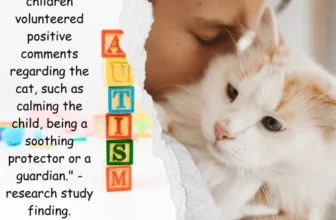As a pet owner, introducing a new California Spangled cat to your other beloved animals can be a daunting task. With each animal having its unique personality and quirks, it’s essential to take the introduction process seriously to make your pets’ transition as smooth as possible. Fortunately, with some preparation, patience, and a bit of creativity, it is possible to introduce the new cat to your other pets successfully. In this article, we’ll explore the best ways to introduce a new California Spangled cat to your other pets, step-by-step.
Preparing for the Introduction

Preparing for the introduction of a new California Spangled cat to your household pets is crucial to ensure a smooth transition. It’s important to take the necessary steps to make the introduction as stress-free as possible for all pets involved. By doing so, you can avoid potential conflicts and ensure that your pets will learn to coexist peacefully with each other. In this section, we will discuss some tips on how to prepare for introducing your new feline friend to your other pets. It’s important to note that while California Spangled cats are generally known for their friendly and outgoing nature, each pet has its unique personality, and compatibility may vary. Make sure to refer to our article on California Spangled cat compatibility to understand how well they get along with different animals.
1. Schedule a visit to the vet
One of the first things you need to do before introducing a new California Spangled Cat to your other pets is to schedule a visit to the vet for your new cat. This is especially important if you have adopted your cat from a shelter or a previous owner, as you need to make sure that your new cat is healthy and up-to-date on all their vaccinations. Additionally, your veterinarian can check for any underlying health conditions that could affect your new cat’s ability to interact with other animals.
During the vet visit, make sure to ask for advice specific to introducing a new cat to your other pets. The vet may be able to give you some tips tailored to your individual animals and situation. They may also be able to recommend resources for further information on the topic. You can also take this opportunity to discuss any concerns you have about your existing pets’ reactions to the new cat, such as if you have a dog that has never been around cats before.
Scheduling a vet visit should be one of your top priorities when introducing a new California Spangled Cat to your other pets. It is essential for ensuring the safety and well-being of all animals involved, and can provide useful information and resources for making the transition as smooth as possible. For more information on introducing California Spangled Cats to different types of pets, check out our articles on cats and dogs coexistence, cats and small animals coexistence, and tips for cats and birds compatibility.
2. Create a safe space for your new cat
Creating a safe space for your new cat is essential for a successful introduction with your other pets. This space should be separate from the rest of your home and designated for your new cat to retreat to when feeling overwhelmed or scared. Here are some steps to follow when creating a safe space:
- Choose a quiet area: Select a low-traffic area in your home where your new cat can feel safe and secure. A spare bedroom or office can be a good choice, as long as it is free from other pets and distractions.
- Provide necessary items: Make sure to provide your new cat with the necessary items, such as a litter box, food and water bowls, bedding, and toys. Consider purchasing pheromone products, such as Feliway, to help calm your new cat and decrease stress levels.
- Ensure safety: Make sure the safe space is secure and free from any hazards that could harm your cat. Check for any potential escape routes, dangling cords, or small objects that could be ingested.
- Introduce gradually: Allow your new cat to acclimate gradually to their safe space. Keep the door closed initially to allow them to feel more comfortable and secure. Take the time to offer attention and affection, so they associate you with positive experiences.
By creating a safe space for your new cat, you will provide them with a sense of security and comfort, which will make it easier for them to adjust to their new environment and eventually be introduced to your other pets.
3. Familiarize your pets with each other’s scent
Before introducing your new California Spangled cat to your other pets, it’s important to familiarize them with each other’s scent. This helps to reduce any anxiety or aggression that your pets may feel when they are finally introduced. Here are some steps to take to help familiarize your pets with each other’s scent:
- Swap blankets or bedding
- Use a towel
- Use pheromone sprays or diffusers
- Regularly switch rooms
- Allow face-to-face sniffing
Exchange blankets or bedding between your new cat and other pets. This helps them get used to each other’s scent. You can leave the swapped items in their respective resting places for a few days before returning them to the correct pet.
Rub a towel on your new cat and bring it to your other pets to sniff. Likewise, bring a towel with your other pets’ scent to your new cat. Allow each pet to sniff and get familiar before removing the towel.
Pheromone sprays or diffusers can be used to calm your pets and make them feel more comfortable with each other’s scent. These products can be found in pet stores and can help reduce stress and anxiety.
Allow each pet to explore different areas of the house to get used to each other’s scent. This helps them gradually get used to each other’s presence and reduce any territorial behavior.
Once your pets are used to each other’s scent, allow them to sniff each other face-to-face through a barrier like a baby gate or screen. This helps to establish familiarity and can reduce aggressive behavior during later introductions.
By following these steps to familiarize your pets with each other’s scent, you can help make the introduction process smoother and reduce the likelihood of any aggressive behavior. It’s important to go at your pets’ pace and be patient with the process.
Introducing Your Pets

Bringing a new pet into your household can be an exciting time, but it can also be stressful for both your new California spangled cat and your existing pets. Introducing them can be nerve-wracking, but there are ways to make the transition smoother. Now that you’ve prepared for the introduction, it’s time to explore the steps for a successful introduction. Keep in mind that patience and careful monitoring are key to a successful introduction.
4. Start with brief, supervised interactions
When introducing your new California Spangled cat to your other pets, it’s important to start with brief, supervised interactions. This will help prevent any initial conflicts and allow everyone to become more comfortable with each other over time. Here are some steps to follow:
- Step 1: Put your new cat in a separate room with food, water, litter box, and toys. Make sure the door is closed and there is no way for the other pets to get in.
- Step 2: Allow your other pets to sniff around the door and get familiar with the new cat’s scent. This will help prevent any initial fear or surprise when they finally meet.
- Step 3: Once all the pets seem comfortable with the new cat’s scent, it’s time for their first interaction. Keep it brief, only a few minutes at first, and make sure both the new cat and the other pets are supervised.
- Step 4: Watch for any signs of tension or aggression from either the new cat or the other pets. If there are any signs of discomfort or aggression, separate the animals and try again later.
- Step 5: Repeat these brief introductions over time until all the pets are comfortable with each other’s presence.
Remember, this process is important to ensure a smooth transition and prevent any potential conflicts between your new California Spangled cat and your other pets. Be patient and allow your pets to adjust at their own pace.
5. Use a baby gate or carrier to separate animals
One effective way to introduce a new California Spangled cat to your other pets is by using a baby gate or carrier to separate them during their initial interactions. This creates a physical barrier between the animals while allowing them to see, smell, and hear each other.
The benefits of using a baby gate or carrier for separation:
| Benefit | Description |
|---|---|
| Prevents physical harm | Many animals may be territorial and may attempt to fight with each other during initial introductions. A baby gate or carrier ensures that they can’t physically harm each other. |
| Allows supervision | You can closely monitor the interaction without interfering or causing stress to the animals. |
| Reduces stress | The physical barrier can help to ease the anxiety that your pets may feel when first introduced to each other. |
When using a baby gate or carrier to separate your pets, it’s important to ensure that the animals are comfortable in their respective spaces. Place familiar items, such as bedding or toys, in the carrier or behind the baby gate to help them feel at ease.
It’s also important to gradually introduce them to each other’s presence. Start with short periods of time and gradually increase the duration as your pets become more comfortable. You can use treats or praise to reinforce positive behavior during these interactions.
Remember, every pet is different and there is no one-size-fits-all approach to introducing new animals. Be patient and attentive during the process and allow your pets to gradually get used to each other’s presence.
6. Reward good behavior
Rewarding good behavior is a key element to introducing a new California Spangled cat to your other pets. Here are some tips to reward good behavior:
- Use treats: Rewarding your pets with their favorite treat is an excellent way to encourage positive interactions. Giving treats is also a great way to reinforce good behavior during the introduction process.
- Offer praise: Verbal praise is important; it helps to reinforce good behavior. When you see your pets interacting positively and not showing any sign of aggression, praise them verbally to let them know they are doing a good job.
- Provide toys: Providing toys and playthings can distract pets from feeling threatened by the new cat and encourage them to play together. Interactive toys, such as a laser pointer, can also help to divert their attention from each other and keep them engaged
- Use positive reinforcement: Positive reinforcement can come in the form of praise, toys or treats. When you reward your pets for displaying positive behavior, they will associate good behavior with a positive experience. This will motivate them to continue behaving in a manner that pleases you and keep the process moving forward.
- Be consistent: Consistency is key when it comes to rewarding good behavior. Pets are creatures of habit, so if you reward your pet for a particular action one day and then fail to reward them for the same behavior the next day, it can lead to confusion. This can set the introduction process back, so make sure to stay consistent with your positive reinforcement.
Following these tips, you can reward your pets for their good behavior as they move towards becoming comfortable with each other. Remember to keep a close eye on their interactions and to be patient with the process. It may take time, but with consistent effort, your pets will learn to coexist happily under the same roof.
7. Monitor interactions closely
When introducing a new California Spangled Cat to your other pets, it’s important to monitor their interactions closely. This means keeping a watchful eye over them while they’re interacting and being alert for any signs of aggression or stress.
Signs of stress or aggression may include hissing, growling, flattened ears, raised fur, and swiping paws. If you notice any of these signs, it’s important to intervene and separate the animals immediately.
To make it easier to monitor interactions, consider using a table to keep track of your observations. Use the table to note the date and time of the interaction, the animals involved, and any notes on their behavior. This can help you identify patterns and track progress as you continue to introduce your pets.
Here’s an example of what your table might look like:
| Date & Time | Animals Involved | Observations & Notes |
|---|---|---|
| Day 1, 12:00 pm | New Cat & Dog | New Cat was nervous and hid under the bed. Dog sniffed around but did not attempt to interact. Supervised interaction for 5 minutes. |
| Day 2, 9:00 am | New Cat & Dog | New Cat hissed and swiped at Dog when he got too close. Separated animals immediately. |
| Day 3, 5:00 pm | New Cat & All Pets | Introduced all pets in a neutral room. New Cat showed fear and hid behind the couch. Separated animals after 10 minutes. |
Keep in mind that every interaction between your pets will be different, and it may take time for them to adjust to each other. By closely monitoring their interactions and taking note of their behavior, you can ensure a safe and successful introduction for all pets involved.
Transitioning Your Pets

As your pets become more comfortable around each other, it’s time to move into the next phase: transitioning. This is where you’ll slowly increase the amount of time your pets spend together and provide separate resources for each. As with previous steps, patience and close monitoring are key to a successful transition. Follow these tips to help your pets fully integrate and become happy, loving companions.
8. Gradually increase the amount of time your pets spend together
As your new California Spangled cat becomes more comfortable in your home, you can start to gradually increase the amount of time they spend around your other pets. This process should be done slowly and carefully to avoid any potential conflicts or anxiety between the animals. Here are some steps you can take to ensure a smooth transition:
| Step | Action |
|---|---|
| 1. | Start with short periods of supervised time together: Allow your pets to interact under your supervision for brief periods of time. Gradually increase the amount of time they spend together as they become more comfortable. |
| 2. | Observe their body language: Keep an eye out for any signs of stress or aggression in your pets. If you notice any negative behavior, separate the animals and try again later. |
| 3. | Provide plenty of positive reinforcement: Offer treats and praise for good behavior. This will encourage your pets to interact in a positive manner. |
| 4. | Separate the animals if necessary: If you notice any negative behavior, separate the animals and try again later. Gradually increase the amount of time they spend together as they become more comfortable. |
| 5. | Be patient: Introducing a new cat to your other pets can take time. Don’t rush the process and be patient with your pets as they adapt to their new family member. |
Remember, it’s important to take your time and not rush this process. Gradually introducing your new California Spangled cat to your other pets will help ensure a peaceful and happy household for all of your furry friends.
9. Provide separate resources for each pet
When introducing a new California Spangled Cat to your other pets, it’s important to ensure that each pet has their own resources. This includes food bowls, water bowls, litter boxes, and even toys. Providing separate resources for each pet helps to prevent competition and reduces the likelihood of aggression or territorial behavior.
Here are some tips for providing separate resources for your pets:
- Use individual feeding stations: If your pets eat different types of food or have different dietary requirements, make sure to provide separate feeding stations for each pet. This will help to prevent one pet from eating the other’s food and reduce the risk of food aggression.
- Provide multiple litter boxes: As a rule of thumb, it’s recommended to have one more litter box than the number of cats in your home. This ensures that each cat has their own designated place to go to the bathroom and reduces the likelihood of territorial marking or litter box avoidance.
- Offer toys for each pet: Providing toys for each pet can help to keep them occupied and prevent competition over a single toy. Make sure to choose toys that are appropriate for each pet’s age, size, and preferences.
- Keep water bowls separate: It’s important to provide multiple sources of clean drinking water for your pets. Make sure to place water bowls in different locations, so each pet has easy access to water and doesn’t have to compete for it.
By providing separate resources for each pet, you’re setting them up for a successful introduction and reducing the chances of conflict or tension between them. It may take some extra effort, but it’s worth it in the long run to ensure your pets are happy and healthy.
10. Know when to intervene
Knowing when to intervene is important during the introduction of a new California Spangled cat to your other pets. Here are some signs to look out for:
| Signs of Aggression in Pets | Possible Interventions |
|---|---|
| Growling, hissing, or spitting | Separate animals and try again later |
| Barking, lunging, or biting | Separate animals immediately and seek professional help |
| Stalking, chasing, or pouncing | Separate animals and provide plenty of distractions and exercise to reduce predatory behavior |
If any of your pets exhibit these aggressive behaviors, intervene immediately to prevent any serious injuries or harm. It’s important to keep a close eye on your pets’ body language and behavior during the introduction process. If you notice any signs of fear or stress in your pets, such as cowering, hiding, or excessive panting, it may be time to pause the introduction and give your pets some space.
Intervening at the right time can prevent fights or attacks and help make the introduction process smoother for your pets. Remember to remain calm, patient, and assertive when interacting with your pets, and always prioritize their well-being. With proper preparation and careful monitoring, you can successfully introduce your new California Spangled cat to your other pets and give them a chance to develop rewarding friendships.
Common Problems and Solutions

It’s natural to encounter some challenges when introducing a new California Spangled cat to your other pets. However, being prepared and having solutions in place can help minimize any issues that may arise. In this section, we’ll explore some common problems that pet owners face during the introduction process, as well as some effective solutions for each scenario. So let’s dive in and tackle some potential roadblocks together.
11. Aggression between pets
If you notice aggression between your pets during the introduction process, it’s important to address it immediately. Here are some steps to take:
- Separate the animals: In the case of aggression, it’s best to separate the animals and start from the beginning.
- Reintroduce gradually: Start with brief, supervised interactions and gradually increase the amount of time they spend together.
- Use positive reinforcement: Reward good behavior with treats or praise. Avoid punishing your pets.
- Consult a professional: If the aggression continues, consider consulting a veterinarian or animal behaviorist for further guidance.
Aggression between pets can be a common problem when introducing a new cat to your other pets, but it’s important to address it with patience and understanding. Remember that each animal has its unique personality, and sometimes it takes time for them to learn to coexist peacefully. By following the steps above and seeking professional help if necessary, you can help your pets learn to get along and possibly even develop a bond.
12. Your new cat hides or refuses to eat
It is not uncommon for a new California Spangled cat to feel overwhelmed or stressed out during the introduction process. One sign of stress may be if your new cat hides or refuses to eat.
Why is my new cat hiding?
California Spangled cats are naturally curious and adventurous, but it may take some time for them to adapt to a new environment. Hiding is a defense mechanism that cats use to feel safe and secure. Your new cat may be hiding because they are feeling scared or overwhelmed by the new home environment or the presence of other pets.
What should I do if my new cat is hiding?
If your new California Spangled cat is hiding, it’s important to give them space and time to adjust. Don’t force them out of their hiding spot or try to coax them out with treats or toys. Instead, try the following tips:
| Tip #1: | Leave your new cat alone |
| Tip #2: | Provide a safe, quiet space |
| Tip #3: | Make sure your cat has access to food, water, and a litter box |
| Tip #4: | Offer a cozy hiding spot |
| Tip #5: | Use pheromone products to help your cat feel calm |
By following these tips, you can help your cat feel more comfortable in their new surroundings. If your cat continues to hide or refuses to eat for an extended period, contact your veterinarian for advice.
Why is my new cat not eating?
Like hiding, not eating is a common sign of stress in cats. Your new California Spangled cat may not be eating due to a variety of reasons, including a change in routine or environment, feeling overwhelmed, or even a physical health issue.
What should I do if my new cat is not eating?
If your new cat is not eating, there are several steps you can take to encourage them to eat:
| Step #1: | Make sure your cat has easy access to food and water |
| Step #2: | Try different types of food and feeding methods |
| Step #3: | Make mealtimes pleasant and stress-free |
| Step #4: | Offer high-value treats or wet food to entice your cat to eat |
| Step #5: | Consult with your veterinarian if your cat continues to refuse food |
By taking these steps, you can help your new California Spangled cat adjust to their new home and feel safe and secure in their environment.
13. Your other pets act out in response to the new cat
It is not uncommon for established pets to act out in response to the introduction of a new cat. This behavior could manifest in a variety of ways, such as increased aggression, marking their territory, or even acting out by destroying furniture. If you notice any of these behaviors, it is important to address them as soon as possible to prevent any long-term issues.
Identify the Root Cause
The first step is to identify the root cause of the behavior. Is your pet feeling threatened by the new cat’s presence? Are they feeling neglected and acting out for attention? Once you have identified the root cause, you can begin to address the behavior accordingly.
Reinforce Positive Behaviors
One effective way to address negative behaviors is to reinforce positive behaviors. When your established pets exhibit behavior that is appropriate towards the new cat, be sure to reward them with treats, toys, or attention. This reinforces the idea that positive behaviors are rewarded, which can encourage them to continue to act in the same way.
Provide Sufficient Resources
It is also important to ensure that all of your pets have enough resources, such as food, water, and toys, to avoid any competition or jealousy between them. This can help to alleviate any stress or negative behaviors that may arise from feelings of neglect.
Consider Professional Help
If your pets’ negative behavior persists despite your efforts, it may be time to consider seeking professional help. A veterinarian or animal behaviorist can help to identify the underlying cause of the behavior and provide guidance on how to address it.
Summary
Introducing a new cat to other pets can sometimes result in negative behavior from established pets. By identifying the root cause, reinforcing positive behaviors, providing sufficient resources, and potentially seeking professional help, you can address the behavior and help your pets adjust to the new addition.
After the Introduction
Congratulations! Now that you’ve successfully introduced your new California Spangled Cat to your other beloved pets, it’s important to continue monitoring their interactions and providing individual attention to each furball. Following these next steps will help ensure a harmonious household and strengthen the bond between your furry family members. Let’s dive into what to do after the initial introduction!
14. Continue to monitor interactions
Continuing to monitor interactions between your new California Spangled cat and your other pets is essential for ensuring a harmonious household. This step should be maintained throughout the transition period, which can last for several weeks or even up to a month.
Why it’s important to monitor interactions:
Monitoring interactions will allow you to observe how your pets are reacting to each other’s presence and if there are any signs of aggression or conflict. Catching these behaviors early on can prevent further issues and allow you to address them promptly.
What to look out for:
Be aware of subtle signs of tension, such as growling, hissing, or avoidance. These behaviors may escalate into more severe problems if not addressed appropriately. Additionally, keep an eye on your new cat’s eating habits and litter box use to ensure they are adapting well to their new environment.
How to monitor interactions:
To monitor interactions effectively, set aside dedicated times throughout the day to closely observe your pets together. Alternatively, install cameras or baby monitors to keep an eye on them while you are away. Recording their behavior can help you identify patterns and address any issues.
| Monitor Interactions Tips |
|---|
| Avoid leaving your pets alone unsupervised until you are confident in their interactions. |
| If you notice any aggressive behavior, separate the pets immediately and try reintroducing them later with more supervision. |
| Take note of any improvements or setbacks and be prepared to adjust your approach if necessary. |
Remember that each pet has its own personality and may require different levels of supervision and attention. Keep a close eye on your pets and be patient with their progress. In a few weeks, your pets may be playing and cuddling together without issue.
15. Be patient
One of the most important things to remember when introducing a new California Spangled cat to your other pets is to be patient. Introducing a new cat to a household with existing pets can be stressful and challenging for everyone involved. It’s normal for there to be some bumps in the road, even if you follow all the steps and tips outlined in this article.
It’s essential that you give your pets enough time to adjust to each other’s presence and develop their own relationships. It may take days, weeks, or even months for your pets to become comfortable with each other. During this time, it’s vital to remain calm, patient, and understanding.
One way to practice patience is to observe your pets closely. Take note of their behavior and body language. Are they showing signs of stress or anxiety? Are they becoming more relaxed and curious over time? Use this information to adjust your approach accordingly. If your pets seem overwhelmed or scared, slow down and take a step back. If they seem comfortable and curious, you can gradually increase their interactions.
Another way to practice patience is to avoid forcing your pets to interact. Give them plenty of opportunities to approach each other on their terms, rather than trying to force them together. Remember that each pet has its own personality and preferences. Some may warm up to each other quickly, while others may need more time and space.
Finally, don’t forget to take care of yourself, too. Introducing a new pet can be emotionally taxing, and it’s easy to become frustrated or discouraged. Make sure you’re taking breaks, practicing self-care, and seeking support from friends, family, or a professional if necessary.
Introducing a new California Spangled cat to your other pets requires patience, dedication, and a willingness to adapt. By following the tips and suggestions in this article, you can increase the likelihood of a smooth and successful transition. Remember, it’s all about giving your pets the time and space they need to form strong, happy relationships.
| Ways to Be Patient: |
|---|
| Observe your pets closely |
| Avoid forcing your pets to interact |
| Take care of yourself, too |
16. Give your pets individual attention
Giving each of your pets individual attention is crucial when introducing them to a new cat. It helps them to feel secure and loved, reducing any potential jealousy or aggression towards the new addition. Here are some tips on how to give your pets individual attention during the introduction process:
| 1. Quality Time | Spend quality time with each of your pets separately, doing activities they enjoy. This shows them that you still value and care for them as individuals. |
| 2. Alone Time | Give each pet some alone time to rest and recharge. This is especially important for cats, who are known for their independent nature. |
| 3. Treats and Toys | Provide treats or toys to your pets during your individual time with them. This can help them associate positive experiences with the introduction process. |
| 4. Consistent Schedule | Stick to a consistent schedule for feeding, playtime, and attention. This helps your pets feel secure and ensures they are getting the attention they need. |
| 5. Exercise and Play | Regular exercise and playtime can also help reduce any tension between your pets and improve their overall well-being. Try scheduling a playtime session with each pet separately. |
By following these tips, you can ensure that each of your pets receives the love and attention they need during the introduction process. This can help them to adjust to the new cat more easily and avoid any potential behavioral issues. Remember to be patient and consistent, and you’ll be on your way to a happy and harmonious household!
17. Allow your pets to have their own space
Pets, just like humans, need their own personal space. As you introduce a new California Spangled Cat to your other pets, it’s important to provide separate areas for each pet. This will ensure that your pets have a safe place to retreat to if they feel overwhelmed or stressed.
Here are some ways to provide individual space for your pets:
- Create separate feeding areas: Your pets should have their own feeding and water stations away from each other. This will prevent any competition or aggression over food.
- Provide separate sleeping areas: Each pet should have their own bed or crate. This will give them a dedicated spot to rest without being disturbed.
- Offer separate litter boxes: If you have multiple cats, they should each have their own litter box. This will help prevent any territorial issues or litter box avoidance.
- Maintain personal play areas: Provide separate toys, scratching posts, and play areas for your pets. This will give them their own space to play and explore without any competition from the others.
By providing separate spaces for each pet, you can help prevent any potential conflicts or stress during their transition. Make sure to give each pet their own dedicated area and provide plenty of opportunities for them to be alone when they need it. This will help ensure a smooth and successful introduction between your new California Spangled Cat and your other furry friends.
Conclusion
As pet owners, we all want our furry friends to get along and live harmoniously together. Introducing a new California Spangled cat to your other pets can be a daunting task, but with patience and preparation, it can be a successful transition. From scheduling a visit to the vet to gradually increasing the amount of time your pets spend together, we’ve covered the essential steps to make the introduction process easier. But remember, introducing a new pet takes time and effort, and there may be challenges along the way. In this final section, we’ll provide you with some tips on how to continue to monitor and care for your pets after the introduction has taken place.
18. Introducing a new cat takes time and patience
Introducing a new cat to your household can be a challenging process that requires a lot of patience, strategy, and preparedness. Here are some key things to keep in mind as you work to integrate your new California Spangled cat with your current pets:
- Introducing a new cat is not a one-day task. It usually takes several weeks for cats to adjust to each other.
- Pay attention to your pets’ body language. Cats use their body language to communicate with each other. Make sure to monitor their behavior closely during the introduction process.
- Be prepared to adjust your strategy as needed. Not all cats will react the same way. If you notice any issues arising during the introduction process, be prepared to adjust your strategy accordingly.
- Introducing a new cat requires a lot of patience and consistency. Don’t rush the process. Slow and steady wins the race when it comes to helping your cats get comfortable with each other.
- Never force your pets to interact. If your pets aren’t ready to interact with each other, don’t force the issue. This could cause more harm than good.
- Seek advice from your vet or a behaviorist. If you’re struggling with the introduction process or your pets are showing signs of aggression towards each other, seek advice from a professional to help you navigate the situation.
Remember, introducing a new California Spangled cat to your other pets takes time and patience. Be prepared to invest the necessary effort to set your pets up for success, and don’t hesitate to seek help if you need it.
19. Follow these tips to make the transition easier
Making the transition of introducing a new California Spangled cat to your other pets can be a stressful and challenging experience for both your pets and yourself. To make the transition as smooth as possible, it is essential to follow these proven tips:
- Schedule a visit to the vet: Before bringing your new California Spangled cat home, it is important to make sure they are healthy and up-to-date on all necessary vaccinations. A visit to the vet will help protect both your existing pets and your new cat from any potential health issues.
- Create a safe space for your new cat: Introducing your new cat to their own separate space, such as a room, will help them feel safe and comfortable while adjusting to their new surroundings.
- Familiarize your pets with each other’s scent: Introduce your pets’ scents to each other by swapping blankets, toys, and other items they have interacted with. This will help them get to know each other’s scent and feel more comfortable in each other’s presence.
- Start with brief, supervised interactions: When you begin introducing your pets, keep interactions brief and supervised. Start by allowing them only short, controlled interactions and gradually increase the time they spend together as they become more comfortable around each other.
- Use a baby gate or carrier to separate animals: Use a baby gate or carrier to separate your pets during the initial stages of the introduction process. This will allow them to see, hear, and smell each other without engaging in direct interaction.
- Reward good behavior: Reward your pets’ good behavior with treats, praise, or playtime. This will encourage positive behavior and help reinforce the notion that good behavior is rewarded.
- Gradually increase the amount of time your pets spend together: Gradually increase the length of the time your pets spend together, starting with short interactions and gradually increasing the amount of time they spend together as they become more comfortable around each other.
- Provide separate resources for each pet: Provide separate resources such as bedding, litter boxes, and food dishes for each pet. This will help avoid potential conflicts and prevent your pets from feeling the need to compete for resources.
- Know when to intervene: If you notice any aggressive or concerning behavior, such as growling or hissing, it is important to intervene immediately. Separate your pets and try reintroducing them at a later time.
- Continue to monitor interactions: Even after your pets have become comfortable around each other, it is still important to monitor their interactions. Being vigilant will help you intervene if any concerning behavior arises and prevent any potential conflicts from escalating.
- Be patient: Patience is key when introducing a new California Spangled cat to your other pets. It may take some time for them to adjust to each other, so don’t get discouraged if progress is slow.
- Give your pets individual attention: Make sure to give your existing pets and your new cat individual attention and affection. This will help them feel secure and avoid potential feelings of jealousy or neglect.
- Allow your pets to have their own space: Make sure to provide your pets with their own safe space where they can go to retreat and relax. This will help them feel more comfortable in their new environment and avoid potential confrontations.
By following these tips, you can ensure a smoother introduction of your new California Spangled cat to your other pets. Remember to be patient, reward good behavior, and be vigilant in monitoring interactions to avoid any potential conflicts.
20. Enjoy watching your pets bond and play together
Watching your pets bond with each other is one of the most rewarding experiences a pet owner can have. It can take time and patience to introduce a new California Spangled cat to your other pets, but seeing them play and interact with each other is worth the effort. Here are some things you can do to encourage bonding and play between your pets.
- Provide toys: Having toys to play with is important for all pets. Make sure each pet has their own toys, and also provide toys that they can play with together, like a cat tower or a puzzle feeder.
- Play together: Spend time playing with your pets together. This could mean playing a game of fetch with your dog while your cat watches or using a laser pointer to engage both your cat and dog in play.
- Encourage grooming: Encourage your pets to groom each other. This can help them bond and also make them more comfortable around each other.
- Give treats: Give your pets treats when they are playing nicely together or showing signs of bonding, like grooming each other. This will reinforce positive behavior and encourage them to continue interacting in a positive way.
- Let them be: While it’s important to encourage bonding and play, it’s also important to let your pets have their own space and time alone. Make sure each pet has their own bed or crate, and don’t force them to be together all the time.
Remember, bonding and play takes time. Don’t get discouraged if your pets don’t become best friends overnight. With patience and perseverance, your pets will eventually bond and enjoy each other’s company.
Frequently Asked Questions
1. Can I introduce my new California Spangled Cat to my other pets right away?
No, it is important to prepare for the introduction to ensure a smoother transition.
2. How long should I keep my new cat in a separate room?
It is recommended to keep your new cat in a separate room for at least a week to allow them to acclimate to their new surroundings.
3. What if one of my pets shows aggression towards the new cat?
You should separate the animals and try introducing them again at a later time. It is important to take this process slowly.
4. Should I let my new cat roam freely around the house?
No, you should start with brief, supervised interactions and gradually increase the amount of time your pets spend together.
5. What if my new cat hides or refuses to eat?
This is normal behavior for a new cat in a new environment. Give them time and space to acclimate, and try offering them their favorite treats or toys to encourage them to come out of hiding.
6. Can I use treats to reward good behavior?
Yes, using treats to reward good behavior can be a helpful tool in the introduction process.
7. Do I need to buy separate resources for each pet?
Yes, it is important to provide each pet with their own food and water dishes, as well as their own toys and beds.
8. What if my pets still don’t get along after several weeks of being introduced?
If your pets are still struggling to get along, it may be best to seek the advice of a professional behaviorist.
9. Can I force my pets to get along?
No, it is important to let the introduction process happen naturally and not force your pets to interact if they are uncomfortable.
10. Should I leave my pets alone during the introduction process?
No, it is important to monitor your pets closely during the introduction process to ensure their safety and well-being.







